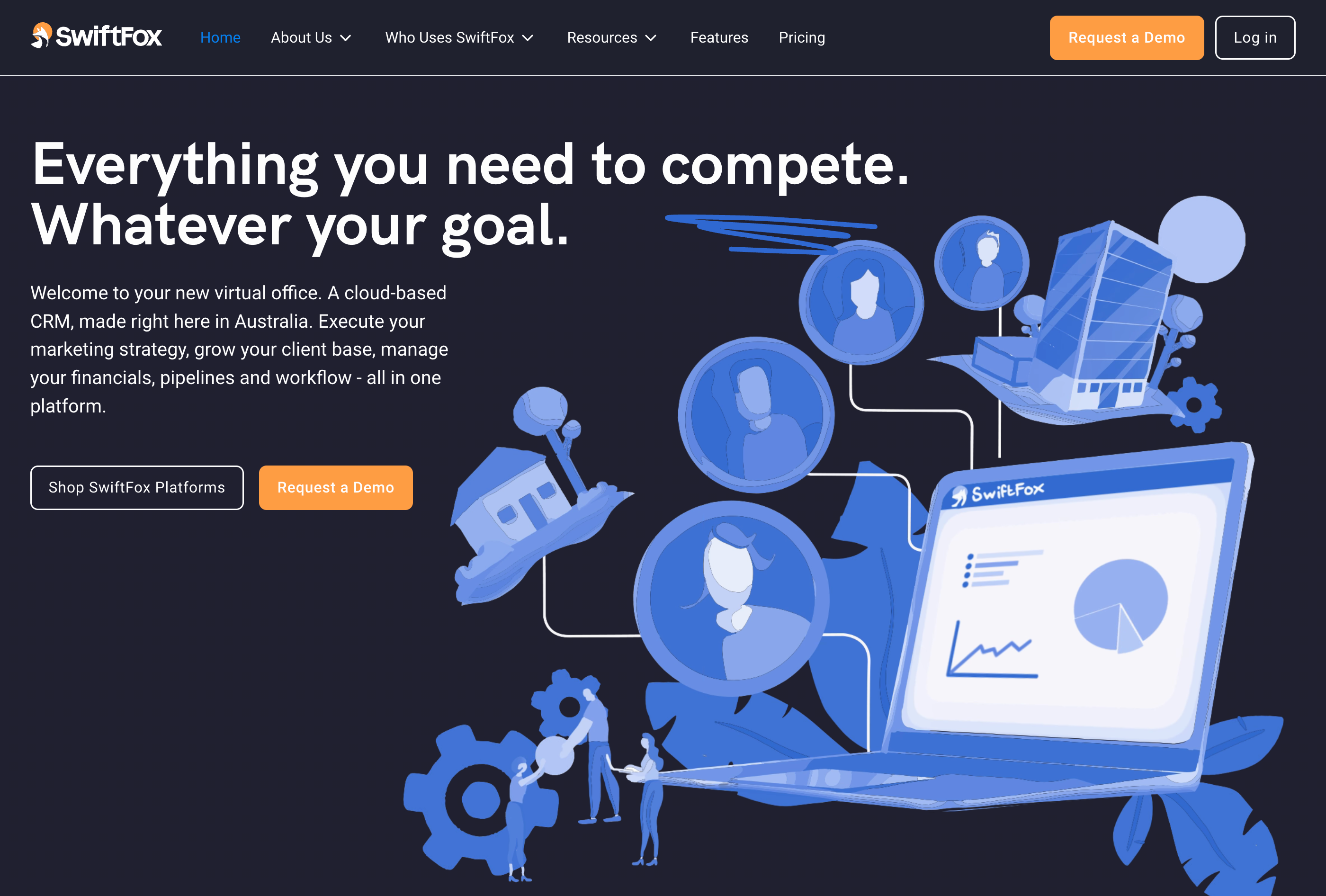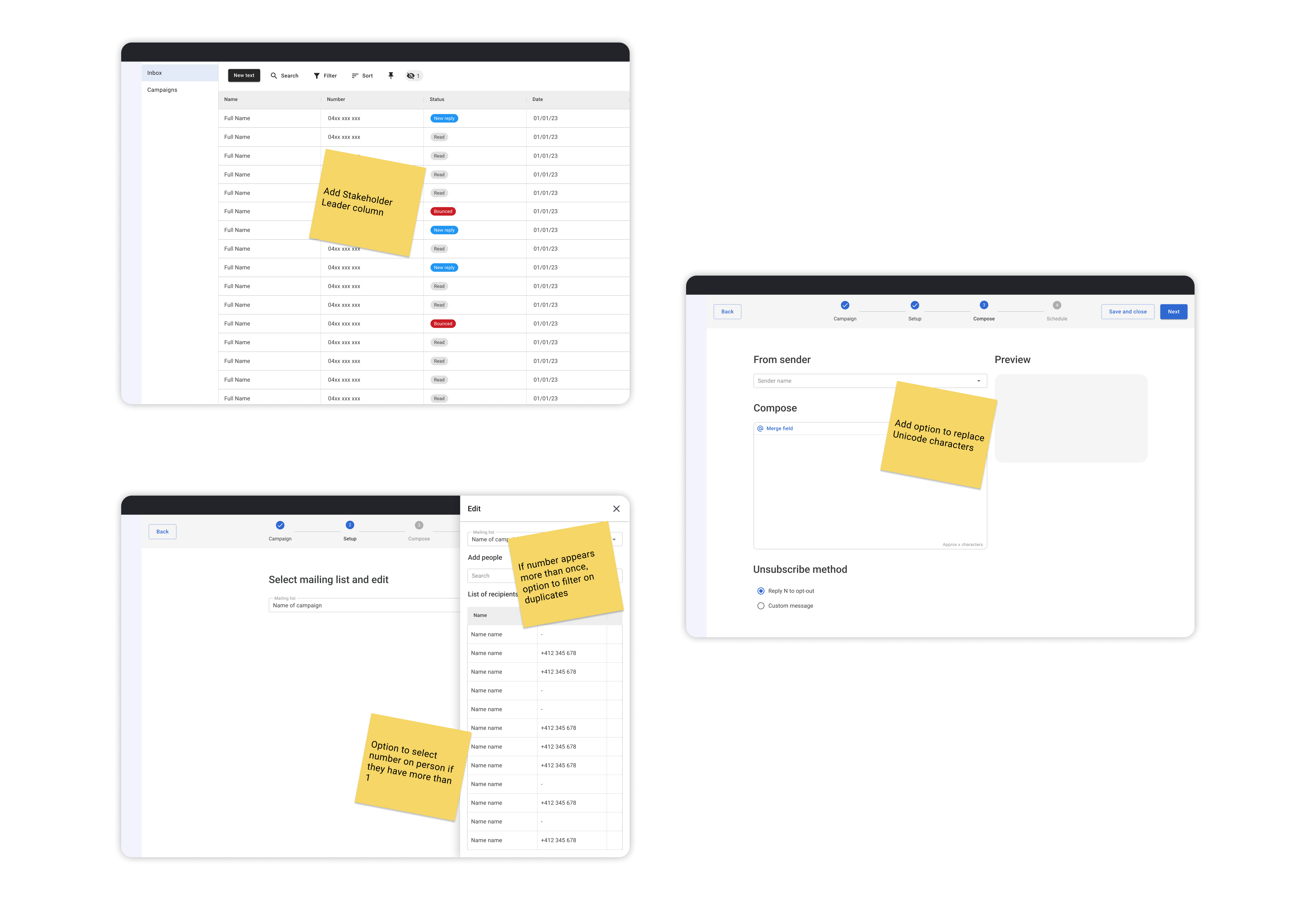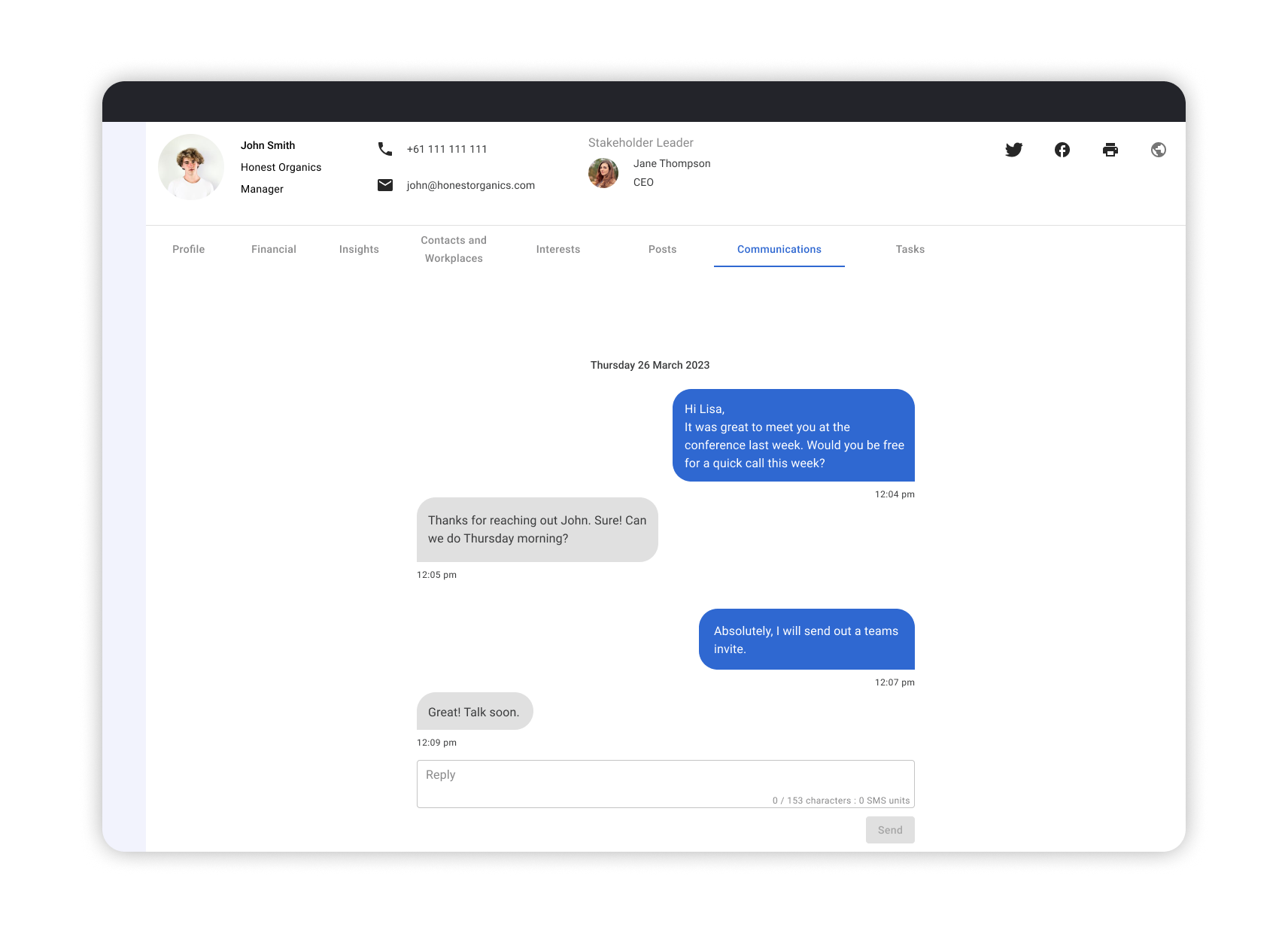

Swiftfox embarked as a data-driven company, empowering users with targeted insights and an intuitive dashboard. Though the market is over-saturated with products, we found a few viable options for a smaller to mid-sized organisation. As we began to research, we quickly ran into challenges:
To develop a reliable system that users could keep open in their browser without the need to navigate elsewhere. The ultimate aim was to save users valuable time by interacting with our product.

I initiated an in-depth investigation to gain comprehensive insights into the CRM landscape and platforms that housed Government data. The process involved conducting careful competitive analysis and delving into various aspects of these platforms. My research involved:
This investigation gave me a comprehensive understanding of how existing CRMs positioned themselves and the target markets they catered to. By analysing their marketing strategies, we gained valuable insights into their messaging and positioning. Additionally, this analysis shed light on areas where our platform's features were lacking and uncovered opportunities for innovation.
It became evident that most CRMs in the market fell into two categories. Some were user-friendly but were missing an essential feature. On the other hand, there were complex platforms that were so feature rich that it had a steep learning curve (I'm looking at you Salesforce).

Most CRMs integrated with other software, such as Mailchimp, for email functionalities. We recognised that there might be a compelling reason for established players adopting this approach. This realisation prompted us to formulate our "How might we" questions, guiding our decision-making process for future endeavours:
By posing these questions, we aimed to prioritise creating a CRM solution that not only met functional requirements but also focused on user satisfaction, seamless functionality, and fostering a sense of importance for our users.
Information has been altered to protect confidentiality
In our detailed analysis of competitor activities, we stumbled upon an intriguing insight about our desired audience - they needed to be key decision-makers within organisations. Our findings suggested that individuals aged 30 and above form the crux of our ideal market.
Drawing from Swiftfox's prior experience, we observed that insightful data and recommendations are typically a privilege for giant corporations due to cost considerations. However, we felt strongly about bringing equality to this space. Our goal was to democratise access to such invaluable resources, enabling smaller and medium-sized businesses to benefit as well.
Once we defined our target audience, the next puzzle was understanding their needs. Research indicated that industry frontrunners like HubSpot and Monday segmented their audiences based on job fields - a strategy that resonated with us. Consequently, we decided to concentrate on the following markets:
By aligning ourselves with these specific markets, we could tailor our offerings and messaging to resonate with the unique needs and challenges decision-makers in these sectors face. This approach allowed us to create a focused and effective marketing strategy, catering to the target audience segments identified through our research.

In today's fast-paced world, campaigners and change-makers face many challenges when connecting with their members and driving impactful campaigns. Most people I've met want to support these organisations. Still, they find it difficult to choose who they want to help, and with the state of the world, as it stands, there is already enough sadness for a lifetime.
The goal is to provide campaigners and change-makers an effective way to connect with their members and drive impactful campaigns. The solution should address pain points achieve the following objectives:
I interviewed clients and used existing research on grassroots movement behaviours to develop a user persona. Based on the gathered insights, I have created the following user persona. Sarah Johnson, a 35-year-old Campaign manager, wants to make meaningful change and connect with their supporters.

Cinch stands out with its user-friendly interface, providing users with a clean and intuitive experience. Navigating the platform is a breeze, enabling users to efficiently perform tasks. The platform's strength lies in its marketing-focused features, offering automated messaging, customer segmentation, and analytics. Cinch seamlessly integrates with popular CRM and marketing automation platforms, allowing users to leverage their existing systems.
However, Cinch's limitation lies in its one-way communication approach, hindering interactive engagement and limiting the effectiveness of campaigns that require personalised conversations. Additionally, the supporter management capabilities are relatively basic, needing more advanced features for organising and segmenting large supporter databases. While Cinch provides analytics, the depth and granularity of campaign performance insights are limited compared to specialised campaign-focused platforms.
Yabbr's two-way communication capabilities foster interactive engagement between campaigners and their audience. The platform offers customisable messaging experiences like polls, surveys, and chatbots, enabling deeper supporter involvement. Yabbr's focus on political campaigns provides tailored features for the unique requirements of the political landscape.
However, Yabbr can be more complex to set up and configure, potentially posing a steeper learning curve for users unfamiliar with the platform. Integration options with external systems, such as CRMs, may also be more limited compared to platforms like Cinch. Furthermore, Yabbr's emphasis on interactive messaging experiences may result in fewer marketing automation features commonly found in dedicated marketing platforms.
When evaluating Cinch and Yabbr, it is vital to consider the specific needs of campaigners and change-makers. Cinch excels in marketing-centric features and integration capabilities, making it suitable for organisations leveraging existing marketing systems. Yabbr offers a more interactive and customisable messaging experience tailored to political campaigns. For our two-way text messaging feature, we can combine the strengths of both competitors by providing a user-friendly interface, robust integration options, two-way communication capabilities, and customisable messaging experiences. Addressing the weaknesses identified in the competitor analysis will allow us to create a solution combining Cinch and Yabbr's best aspects, providing a unique value proposition for campaigners and change-makers.
To better understand user needs and tasks, I conducted UX research, which involved user interviews, surveys, and task analysis. The research aimed to identify pain points, user behaviours, and desired features.
I outlined User Flows to help identify gaps or bottlenecks in the user journey. It also ensured that the stakeholders and I were aligned on the intended user experience.

After gathering user feedback through usability testing and interviews, I made several iterations to improve the two-way text messaging feature

With a go to market strategy in hand, we launched our feature off to sea.



Throughout my time, one of my favourite things I've implemented was the 'drop-in'. Like many other organisations, my team and I were forced to work from home at the pandemic's start. We were all used to sitting in the office and seeing each other daily. I would just walk over to their desk if I needed to ask someone. Cut to a pandemic, my office was next to my nephew's crib.
The organisation was primarily on teams, and we would send teams messages instead of emails. Though Team's messages were faster than emails, it still needed to compete with getting up and asking someone. The only face time we would have is that every day started with a stand-up. A coworker and I started staying on after the stand-ups were done. We would stay on for hours, and the goal was to talk only some of the time. It was just so that we had a semblance of life.In comes the new idea: The drop in channel.
This was a channel where we would start the meeting at the start of the day, going all day. It wasn't a place we needed to talk the entire day or have our cameras on. We could stay in this meeting, and if there was a question, we could ask it - the new normal. Over time, this became widely adopted in the organisation. Now we have new traditions. The person that would start the meeting would give it a funny name, we share resources, and we talk about anything. People felt more connected and engaged, it helped bring a sense of togetherness.